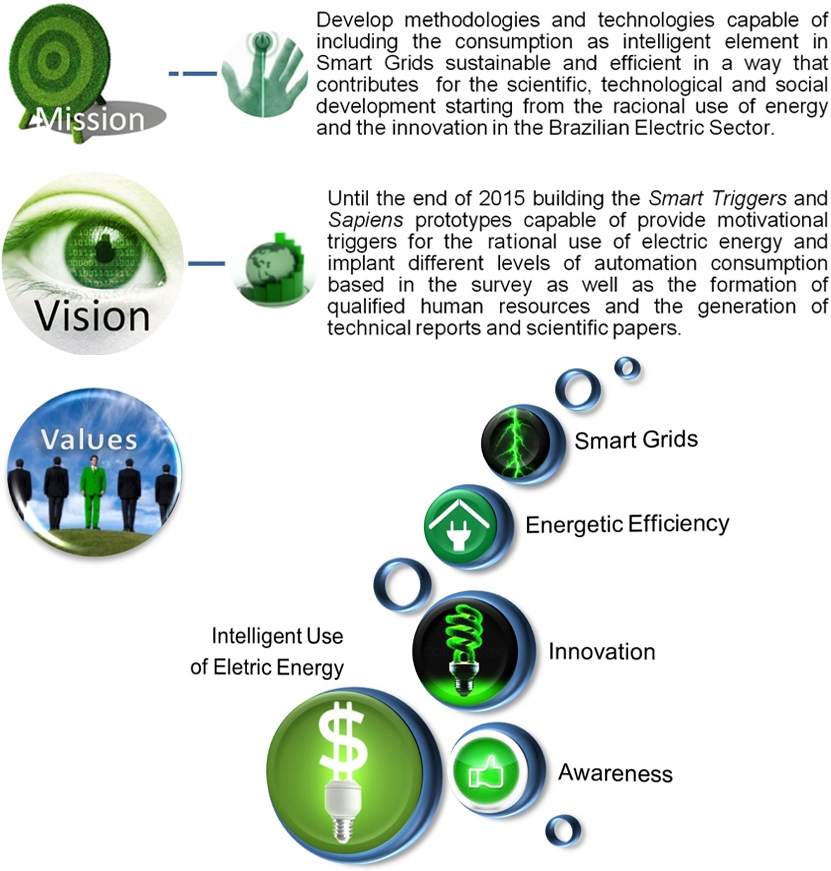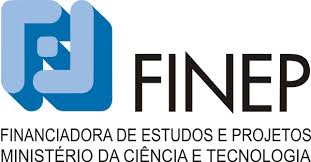Mission, Vision and Values

Partners:
Sponsor:
[tabs]
[tab_item title="Equipe"]
Eduardo Henrique Maciel - Lattes
PhD student in Electrical Engineering from the Federal University of Rio Grande do Sul (UFRGS)
Fernanda Mota - Lattes
PhD student in Science Education: Químida of Life and Health, Federal University of Rio Grande (FURG)
Fernando Pereira de Tôledo - Lattes
Master student in Computer Modelling the Federal University of Rio Grande (FURG)
Jonas Casarin - Lattes
Master student in Computer Engineering from the Federal University of Rio Grande (FURG)
Robledo Castro - Lattes
Majoring in Information Systems from the Federal University of Rio Grande (FURG)
[/tab_item]
[tab_item title="Project Description"]
The Sapiens Project aims to study and development of methodologies and technologies capable of include consumption as intelligent element in sustainable and efficient Smart Grids in order to contribute to the scientific and technological development and innovation of the Brazilian Electric Sector. More specifically, it is proposed to achieve the following goals and objectives:
- Defining a taxonomy of methods for automation of residential energy consumption, considering the psychological aspects associated with the individual's motivation for sustainable consumption awareness (behavioral change);
- Study Case Realization in order to study and evaluate the different individual consumer profiles in homes, making it possible to obtain methodology for the preparation of motivational triggers postures conscious consumption;
- Development of Prototype Smart Trigger, to be integrated into present households in Smart Grids (30 homes in Brazil), able to motivate the user to perform a conscious consumption of electricity, in addition to remote monitoring of consumption and performance features in real time via web apps, SMS and smartphones (iOS and Android);
- Study Case Realization in order to study and evaluate the different consumption automation profiles, enabling obtaining method for obtaining different levels of automation aimed at an intelligent and automated consumption;
- Development of Prototype Sapiens, which based on the Smart Trigger, add to this the possibility of adopting different levels of automation of consumption, allowing the performance of operations and autonomous controls (without explicit user interaction);
- Study Case Realization in order to test and validate the methodology and the prototype Sapiens as fourth stage of Power Supply process in a scope Smart Grid
[/tab_item]
[tab_item title="Photos"]
Project Architecture
- User: Consumer of electricity;
- Sensor: Plugs checking the consumption of electric energy, presence sensor, camera;
- Perception: This module is composed of the monitor elements that receives the electricity consumption of plugs via Zigbee protocol and raspberryPI, which receives data of camera monitor and presence sensor;
- User Model: This module has the following elements:
- Motivation: receive feedback with consumption data in real time and also receive a trigger in the form of pleasurable message allows the consumer hope to contribute to the preservation of the environment through sustainable use of electricity;
- Skill: the user should have the ability the following factors of simplicity: time to handle the sensors, money to buy the sensors, brain cycles to learn to handle the architecture components and be willing to leave the routine to change their behavior.
- Actuator: In this module the RaspberryPI is responsible for sending commands to the sensor module;
- Sapiens: Module responsible for providing two types of output (triggers and intelligent actions);
- Smart Action: Module that sends commands to turn on/off devices that are connected to the sensors;
- Triggers: The resource will have the following formats:
- Spark: This trigger will be sent in the form of messages to the user;
- Facilitator: This trigger is sent in two ways: in the form of drive (allowing the consumer turn on and off the equipment) and in the form of messages;
- Signal: This trigger will be sent in the message format to see if the user still has the ability and motivation to use the system.
Visit and presentation of the project to students of the college Jardim de Sol
 |
 |
[/tab_item]
[tab_item title="Papers in proceedings of conferences"][/tab_item]
[tab_item title="Meeting Minutes"][/tab_item]
[tab_item title="Workplan"][/tab_item]
[tab_item title="Documents"][/tab_item]
[/tabs]






